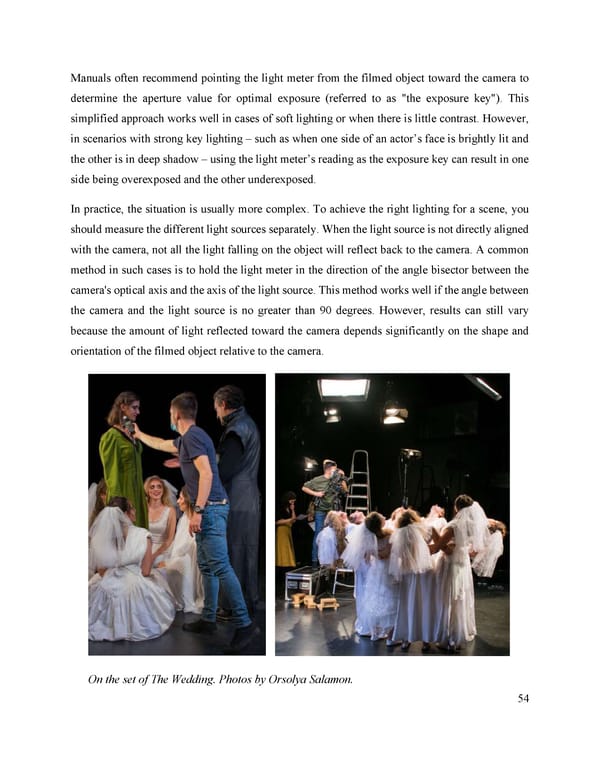Manuals often recommend pointing the light meter from the filmed object toward the camera to determine the aperture value for optimal exposure (referred to as "the exposure key"). This simplified approach works well in cases of soft lighting or when there is little contrast. However, in scenarios with strong key lighting – such as when one side of an actor’s face is brightly lit and the other is in deep shadow – using the light meter’s reading as the exposure key can result in one side being overexposed and the other underexposed. In practice, the situation is usually more complex. To achieve the right lighting for a scene, you should measure the different light sources separately. When the light source is not directly aligned with the camera, not all the light falling on the object will reflect back to the camera. A common method in such cases is to hold the light meter in the direction of the angle bisector between the camera's optical axis and the axis of the light source. This method works well if the angle between the camera and the light source is no greater than 90 degrees. However, results can still vary because the amount of light reflected toward the camera depends significantly on the shape and orientation of the filmed object relative to the camera. On the set of The Wedding. Photos by Orsolya Salamon. 54
 Lost Analogue: Exploring Film, Music, and Interdisciplinary Methods in Education Page 54 Page 56
Lost Analogue: Exploring Film, Music, and Interdisciplinary Methods in Education Page 54 Page 56